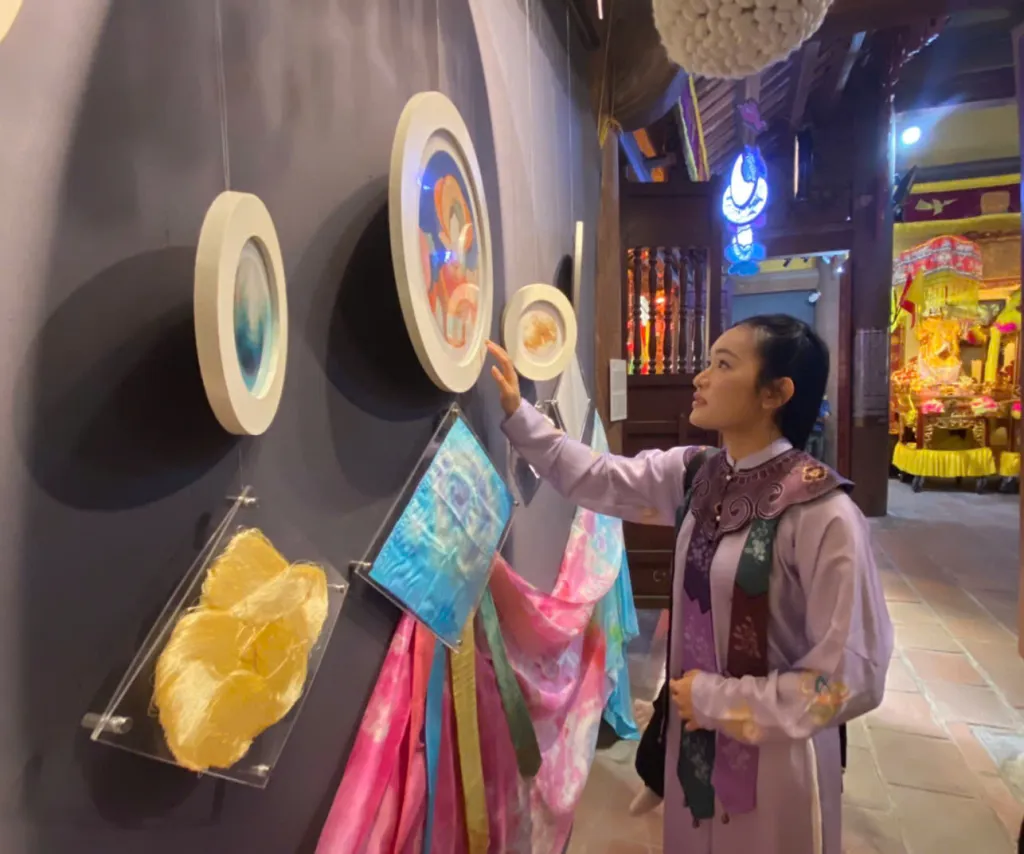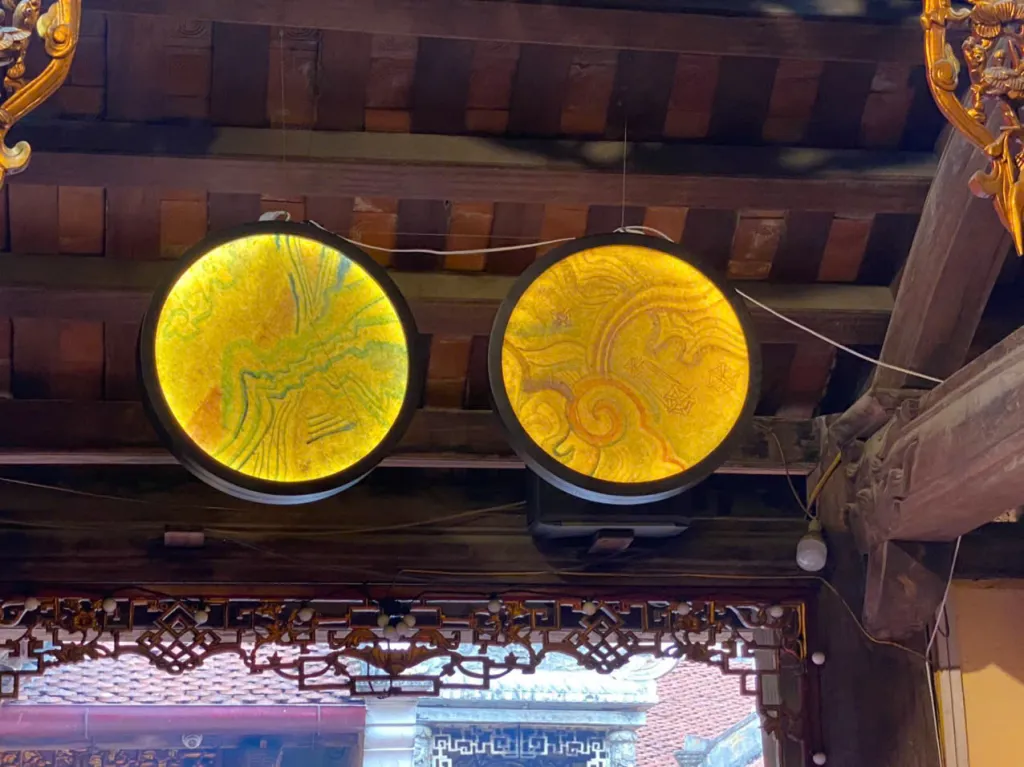“The Color of Silk” Exhibition: A dialogue between heritage and art
A new art exhibition at Yen Thai Communal House celebrates Vietnam’s enduring silk weaving tradition reimagined through the eyes of emerging young artists.
THE HANOI TIMES — Curated by artist and lecturer Nguyen The Son of the Hanoi National University of Education, Sac Lua (The Color of Silk) is part of the broader cultural initiative “Stories of Communal Houses in the City,” developed in collaboration with Hoan Kiem District, Hanoi.

The exhibition enttitled Sac Lua (The Color of Silk) is on display at Yen Thai Communal House, No.8 Tam Thuong Alley, Hanoi until July 4. Photo: An Nhien/ The Hanoi Times
Featuring eight artists and 20 distinctive works, the exhibition explores the intersection of historical memory, traditional craftsmanship, and contemporary imagery.
At the heart of “Sac Lua” lies a reverent tribute to Imperial Concubine Y Lan (1044 - 1117), a revered historical figure of the Ly Dynasty (1009 - 1225). Often remembered as a wise and compassionate ruler, Y Lan rose from humble beginnings to become an influential political figure and regent during the reign of her son, Ly Nhan Tong. Beyond her role in governance, she is celebrated for promoting education, Buddhism, and traditional crafts, notably teaching silk weaving to villagers in Yen Thai, a legacy that lives on in the very fabric of this exhibition.
Through the exhibition's silk artworks, from traditional silk paintings to immersive installations, visitors are invited to witness a thoughtful dialogue between past and present. The medium of silk itself becomes a metaphor: delicate yet enduring, rooted in history yet open to new interpretations.

Artist Tran Thi Hoi (center) presents her artwork titled "Duyen" (Charming).
One of the highlights of the exhibition is the series of paintings entitled "Duyen" (Charming) by artist Tran Thi Hoi, which combines classical silk painting techniques with the aesthetic influence of Japanese Ukiyo-e woodblock prints. The work evokes an ethereal portrayal of Y Lan's life, bridging East Asian artistic traditions with the romanticism of early 20th-century Indochina.
"At the top of the work is a conical hat with Ly Dynasty cultural motifs, typically the soft dragon motif, which is also a prominent Buddhist cultural feature of the period," she explained of the artwork. Below is a series of paintings made of natural cocoons.
Meanwhile, there is a set of five silk paintings depicting the portrait of Y Lan, and a set of four other silk pieces of spring, summer, autumn, and winter, expressing the harmony between man and nature.
Moreover, the set of five paintings at the bottom depicts the life cycle of silk: from the silkworm feeding on mulberry leaves and spinning its cocoon, to the transformation of the cocoon into silk thread, and finally the weaving of the silk into fabric.

Artist Tran Thi Hoi's silk artworks.
Another centerpiece of the exhibition is artist Vu Xuan Dong's installation "Ancient Well Feeding the King," which tells a legendary story of maternal devotion tied to the legacy of Y Lan. The piece combines Ly Dynasty architectural motifs with contemporary materials, softening the grandeur of history into something tender, tactile, and deeply human.
Through the eyes of contemporary artists, the historic Yen Thai Communal House (No. 8 Tam Thuong Alley, Hoan Kiem District, Hanoi) has been reimagined as a dynamic new center for artistic expression in the heart of the capital. Its aged ironwood pillars, moss-covered roof tiles, and serene ambiance come to life anew, whispering age-old stories through the evocative language of visual art.










